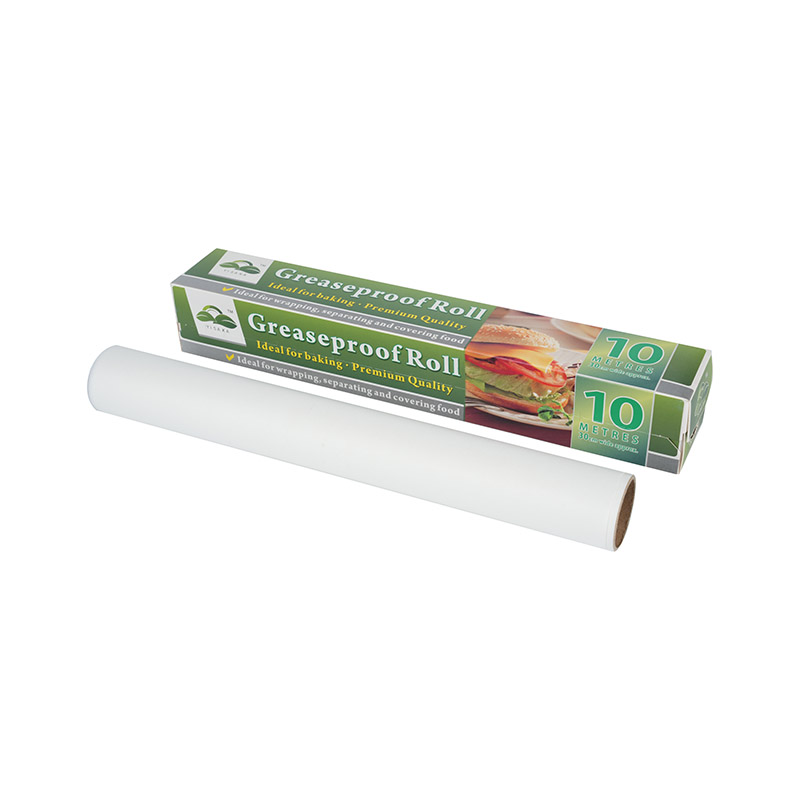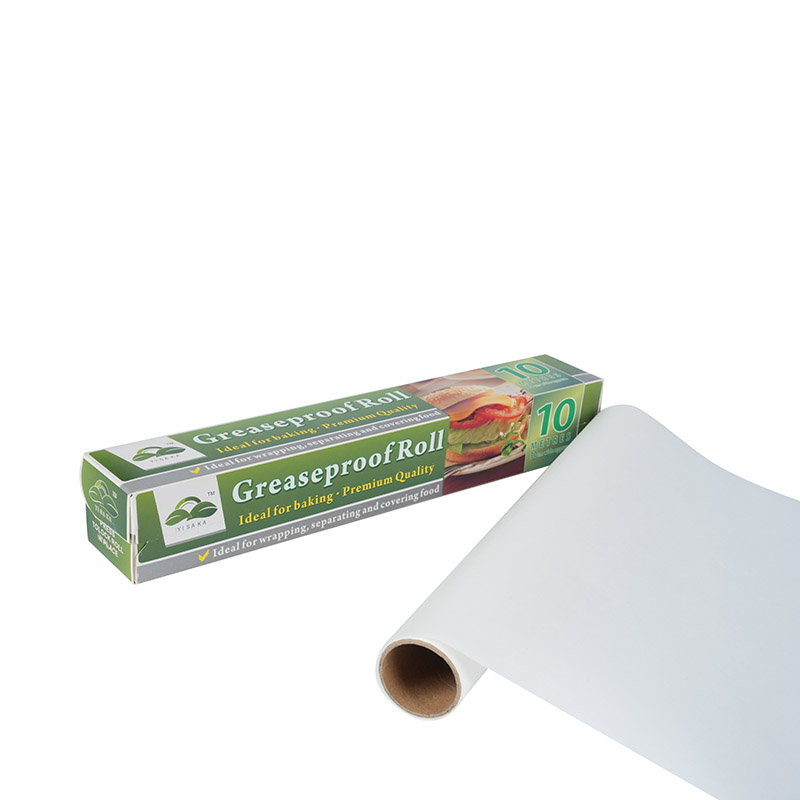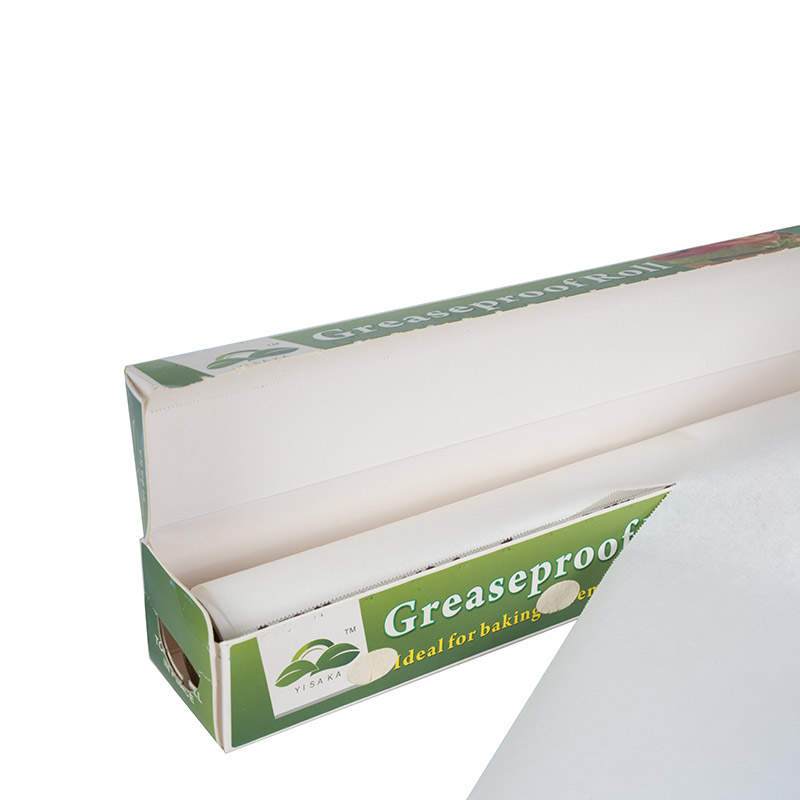The Packaging Conundrum: Necessity Meets Responsibility In the fast-paced world of grab-and-go meals, packaging is an unavoidable necessity. It protec...
READ MOREAll
Baking Paper
Greaseproof Paper
Wax Paper
Parchment Paper
Cooking Sheet Paper
Steaming Paper
Hamburger Wrap
Sandwich Wrap
Pan Liner
Candy Wrap
Air Fryer Paper

Brand Name: YISAKA Coating Side Single Side Compatible Printing Letterpress printing Item: Greasepro...

Brand Name: YISAKA Coating Side Single Side Compatible Printing Letterpress printing Item: Greasepro...

Brand Name: YISAKA Coating Side Single Side Compatible Printing Letterpress printing Item: Greasepro...
The Packaging Conundrum: Necessity Meets Responsibility In the fast-paced world of grab-and-go meals, packaging is an unavoidable necessity. It protec...
READ MOREHave you ever stopped to appreciate the simple sheet of paper that separates your juicy burger from your hands? It might seem trivial, but hamburger w...
READ MOREIn the fast-paced, high-stakes environment of a professional kitchen, every supply choice matters. From the quality of the ingredients to the efficien...
READ MOREIn the realm of professional and home kitchens alike, certain tools rise to the level of indispensable. Among these foundational items are parchment p...
READ MOREWhat are the effects of different fiber types on the oil-proof performance of greaseproof paper?
In the realm of food packaging, greaseproof paper is indispensable for its ability to prevent grease and oils from seeping through, ensuring both the integrity of the packaging and the quality of the food. The effectiveness of greaseproof paper largely depends on the types of fibers used in its production. This article explores how different fiber types impact the oil-proof performance of greaseproof paper, highlighting the importance of fiber selection in the manufacturing process.
Effects of Fiber Types on Oil-Proof Performance
Fiber Length and Strength:
Longer fibers, such as those from softwood and bamboo, create a stronger and more interwoven paper structure. This dense network of fibers reduces the number of pathways for oil to penetrate, enhancing the paper's oil-proof performance.
Shorter fibers, like those from hardwood or bagasse, contribute to a smoother surface, which can facilitate a more uniform application of oil-resistant coatings.
Fiber Density:
High-density fibers, such as those from softwood, bamboo, and hemp, provide superior oil resistance due to the tightly packed structure they form. This density is crucial for preventing oil from seeping through the paper.
Surface Smoothness:
Smooth surfaces, often achieved with hardwood fibers, allow for better coating adhesion and even distribution of oil-resistant agents. A uniform coating improves the overall oil-proof quality of the paper.
Absorption and Porosity:
Fibers that create a less porous paper, like softwood and bamboo, enhance oil resistance by minimizing the absorption of oil. Non-porous surfaces are less likely to allow oil penetration, maintaining the integrity of the packaging.
Enhancing Oil-Proof Performance with Coatings
While the choice of fibers plays a significant role in the oil-proof performance of paper, additional treatments and coatings are often applied to enhance this property:
Silicone Coating: Provides a non-stick, oil-resistant surface that prevents oil penetration.
Wax Coating: Creates a barrier that blocks oil and moisture, often used in combination with specific fiber types to improve performance.
Biodegradable Coatings: Newer, eco-friendly coatings are being developed to provide oil resistance without compromising the paper's environmental benefits.
The type of fibers used in the production of greaseproof paper has a profound impact on its oil resistance capabilities. Long, strong fibers like those from softwood, bamboo, and hemp create a dense, tightly woven structure that enhances oil-proof performance. Smooth surfaces from hardwood fibers facilitate better coating applications, while eco-friendly options like bagasse offer sustainable alternatives. By understanding the properties of different fibers and their effects on oil-proof performance, manufacturers can create more effective and environmentally friendly greaseproof paper products.
What are the methods for using greaseproof paper to evaluate the strength and durability of new products?
Greaseproof paper is a vital component in food packaging, providing an effective barrier against grease and moisture. To ensure that new products using greaseproof paper meet high standards of performance, strength, and durability, rigorous evaluation methods are employed. This article explores the various methods used to assess the strength and durability of greaseproof paper in new products, ensuring they are fit for purpose and maintain their integrity during use.
Importance of Strength and Durability in Greaseproof Paper
Key Methods for Evaluating Strength and Durability
Tensile Strength Testing:
Purpose: Measures the force required to break the paper when it is pulled apart. This test provides an indication of the paper's ability to withstand stretching and pulling forces during handling and use.
Method: A sample of greaseproof paper is clamped at both ends and pulled apart at a constant rate until it breaks. The maximum force applied before the paper breaks is recorded as its tensile strength.
Equipment: Tensile testing machines, also known as universal testing machines (UTMs).
Tear Resistance Testing:
Purpose: Evaluates the paper's resistance to tearing, an important property for ensuring the paper does not easily rip or puncture during normal use.
Method: A pre-cut slit is made in a sample of greaseproof paper, and the force required to propagate the tear is measured. The test is usually performed using an Elmendorf tear tester.
Equipment: Elmendorf tear tester.
Burst Strength Testing:
Purpose: Determines the pressure required to rupture the paper. This test is essential for understanding how well the paper can withstand external pressures without failing.
Method: The paper sample is clamped over a rubber diaphragm, which is then inflated until the paper bursts. The pressure at which the paper bursts is recorded.
Equipment: Mullen burst tester.
Grease Resistance Testing:
Purpose: Assesses the paper's ability to resist grease penetration, a critical property for maintaining the integrity of the paper when in contact with oily foods.
Method: A standardized amount of oil or grease is applied to the paper, and the time taken for the grease to penetrate the paper is measured. Alternatively, the paper's resistance can be evaluated by placing it over a grease-saturated surface and observing any staining.
Equipment: Grease resistance test kits, such as the Kit Test (using standardized oils).
Moisture Resistance Testing:
Purpose: Measures the paper's ability to repel water and moisture, ensuring it maintains its structural integrity when exposed to humid or wet conditions.
Method: The Cobb test is commonly used, where a specific area of the paper is exposed to water for a set time, and the amount of water absorbed is measured.
Equipment: Cobb testing apparatus.
Folding Endurance Testing:
Purpose: Evaluates the paper's durability when subjected to repeated folding, simulating real-world use conditions where the paper may be folded multiple times.
Method: A sample of paper is repeatedly folded until it breaks. The number of folds the paper can withstand before breaking is recorded.
Equipment: Folding endurance testers, such as the MIT folding endurance tester.
Puncture Resistance Testing:
Purpose: Assesses the paper's ability to resist punctures from sharp objects, important for packaging that might come into contact with pointed edges or utensils.
Method: A standardized puncture test is performed where a probe is pushed through the paper, and the force required to puncture it is measured.
Equipment: Puncture testers, often part of a universal testing machine.
Advanced Techniques and Considerations
In addition to these standard tests, advanced techniques such as scanning electron microscopy (SEM) can be used to analyze the microstructure of greaseproof paper. This provides insights into the paper's fiber composition and coating uniformity, which can affect its strength and durability.
Moreover, real-world simulations and accelerated aging tests are also conducted to evaluate how greaseproof paper performs under prolonged use and various environmental conditions. These tests help predict the paper’s long-term behavior and ensure its reliability over time.
Evaluating the strength and durability of greaseproof paper involves a combination of standardized tests that measure various mechanical and physical properties. These tests ensure that new products using greaseproof paper are robust, reliable, and fit for their intended purpose. By rigorously testing and analyzing greaseproof paper, manufacturers can guarantee high-quality, durable packaging solutions that meet consumer expectations and regulatory standards.